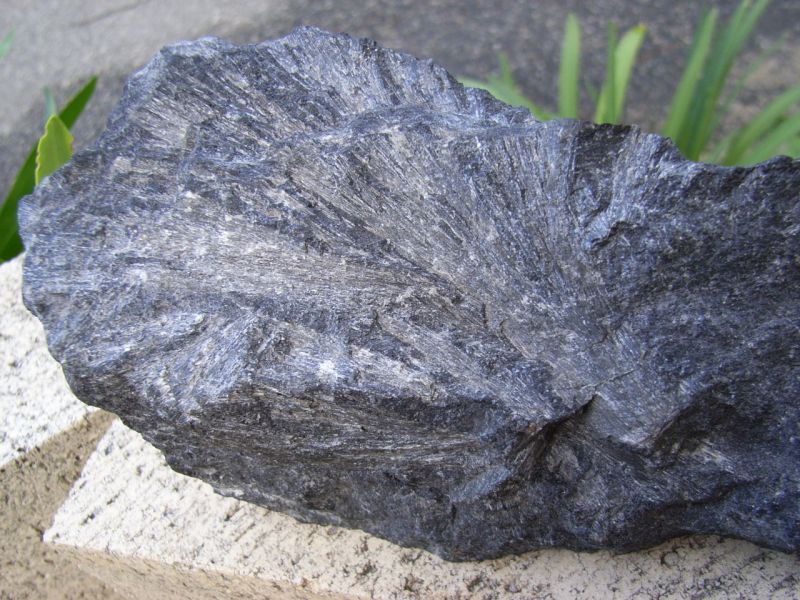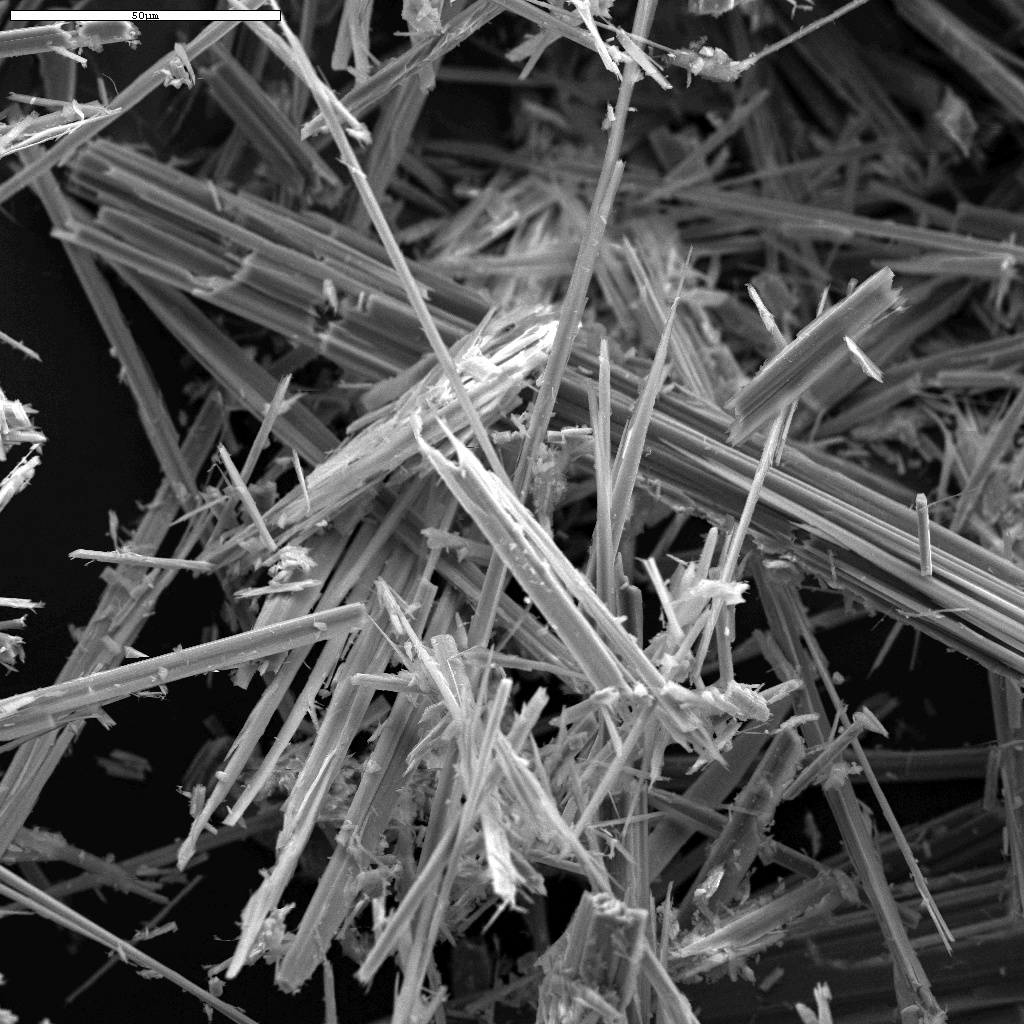Anthophyllite on:
[Wikipedia]
[Google]
[Amazon]
Anthophyllite is an orthorhombic amphibole
 Retrogressive anthophyllite is relatively rare in ultramafic rocks and is usually poorly developed due to the lower energy state available for metamorphic reactions to progress and also the general dehydration of rock masses during metamorphism. Similarly, the need for substantial components of carbon dioxide in metamorphic fluid restricts the appearance of anthophyllite as a retrograde mineral. The usual metamorphic assemblage of retrograde-altered ultramafic rocks is thus usually a
Retrogressive anthophyllite is relatively rare in ultramafic rocks and is usually poorly developed due to the lower energy state available for metamorphic reactions to progress and also the general dehydration of rock masses during metamorphism. Similarly, the need for substantial components of carbon dioxide in metamorphic fluid restricts the appearance of anthophyllite as a retrograde mineral. The usual metamorphic assemblage of retrograde-altered ultramafic rocks is thus usually a
 Fibrous anthophyllite is one of the six recognised types of asbestos. It was mined in
Fibrous anthophyllite is one of the six recognised types of asbestos. It was mined in
mineral
In geology and mineralogy, a mineral or mineral species is, broadly speaking, a solid chemical compound with a fairly well-defined chemical composition and a specific crystal structure that occurs naturally in pure form.John P. Rafferty, ed. (2 ...
: ☐Mg2Mg5Si8O22(OH)2 (☐ is for a vacancy, a point defect
A crystallographic defect is an interruption of the regular patterns of arrangement of atoms or molecules in crystalline solids. The positions and orientations of particles, which are repeating at fixed distances determined by the unit cell param ...
in the crystal structure), magnesium
Magnesium is a chemical element with the symbol Mg and atomic number 12. It is a shiny gray metal having a low density, low melting point and high chemical reactivity. Like the other alkaline earth metals (group 2 of the periodic ta ...
iron
Iron () is a chemical element with Symbol (chemistry), symbol Fe (from la, Wikt:ferrum, ferrum) and atomic number 26. It is a metal that belongs to the first transition series and group 8 element, group 8 of the periodic table. It is, Abundanc ...
inosilicate
Silicate minerals are rock-forming minerals made up of silicate groups. They are the largest and most important class of minerals and make up approximately 90 percent of Earth's crust.
In mineralogy, silica (silicon dioxide, ) is usually consid ...
hydroxide
Hydroxide is a diatomic anion with chemical formula OH−. It consists of an oxygen and hydrogen atom held together by a single covalent bond, and carries a negative electric charge. It is an important but usually minor constituent of water. I ...
. Anthophyllite is polymorphic with cummingtonite
Cummingtonite ( ) is a metamorphic amphibole with the chemical composition , magnesium iron silicate hydroxide.
Monoclinic cummingtonite is compositionally similar and polymorphic with orthorhombic anthophyllite, which is a much more common ...
. Some forms of anthophyllite are lamellar or fibrous and are classed as asbestos. The name is derived from the Latin word ''anthophyllum'', meaning ''clove'', an allusion to the most common color of the mineral. The Anthophyllite crystal is characterized by its perfect cleavage along directions 126 degrees and 54 degrees.
Occurrence
Anthophyllite is the product ofmetamorphism
Metamorphism is the transformation of existing rock (the protolith) to rock with a different mineral composition or texture. Metamorphism takes place at temperatures in excess of , and often also at elevated pressure or in the presence of ch ...
of magnesium
Magnesium is a chemical element with the symbol Mg and atomic number 12. It is a shiny gray metal having a low density, low melting point and high chemical reactivity. Like the other alkaline earth metals (group 2 of the periodic ta ...
-rich rocks, especially ultrabasic igneous rock
Igneous rock (derived from the Latin word ''ignis'' meaning fire), or magmatic rock, is one of the three main rock types, the others being sedimentary and metamorphic. Igneous rock is formed through the cooling and solidification of magma o ...
s and impure dolomitic shales. It also forms as a retrograde product rimming relict orthopyroxenes and olivine
The mineral olivine () is a magnesium iron silicate with the chemical formula . It is a type of nesosilicate or orthosilicate. The primary component of the Earth's upper mantle, it is a common mineral in Earth's subsurface, but weathers quickl ...
, and as an accessory mineral in cordierite
Cordierite (mineralogy) or iolite (gemology) is a magnesium iron aluminium cyclosilicate. Iron is almost always present and a solid solution exists between Mg-rich cordierite and Fe-rich sekaninaite with a series formula: to . A high-temperat ...
-bearing gneiss
Gneiss ( ) is a common and widely distributed type of metamorphic rock. It is formed by high-temperature and high-pressure metamorphic processes acting on formations composed of igneous or sedimentary rocks. Gneiss forms at higher temperatures a ...
es and schist
Schist ( ) is a medium-grained metamorphic rock showing pronounced schistosity. This means that the rock is composed of mineral grains easily seen with a low-power hand lens, oriented in such a way that the rock is easily split into thin flakes ...
s. Anthophyllite also occurs as a retrograde metamorphic mineral derived from ultramafic
Ultramafic rocks (also referred to as ultrabasic rocks, although the terms are not wholly equivalent) are igneous and meta-igneous rocks with a very low silica content (less than 45%), generally >18% MgO, high FeO, low potassium, and are composed ...
rocks along with serpentinite
Serpentinite is a rock composed predominantly of one or more serpentine group minerals, the name originating from the similarity of the texture of the rock to that of the skin of a snake. Serpentinite has been called ''serpentine'' or ''se ...
.
Occurrence in ultramafic rocks
Anthophyllite is formed by the breakdown oftalc
Talc, or talcum, is a clay mineral, composed of hydrated magnesium silicate with the chemical formula Mg3Si4O10(OH)2. Talc in powdered form, often combined with corn starch, is used as baby powder. This mineral is used as a thickening agent a ...
in ultramafic rocks in the presence of water and carbon dioxide
Carbon dioxide ( chemical formula ) is a chemical compound made up of molecules that each have one carbon atom covalently double bonded to two oxygen atoms. It is found in the gas state at room temperature. In the air, carbon dioxide is trans ...
as a prograde metamorphic reaction
A metamorphic reaction is a chemical reaction that takes place during the geological process of metamorphism wherein one assemblage of minerals is transformed into a second assemblage which is stable under the new temperature/pressure conditions r ...
. The partial pressure of carbon dioxide (XCO2) in aqueous solution favors production of anthophyllite. Higher partial pressures of CO2 reduces the temperature of the ''anthophyllite-in'' isograd
__NOTOC__
An isograd is a concept used in the study of metamorphic rocks. The metamorphic grade of such a rock is a rough measure of the degree of metamorphism it has undergone, as characterised by the presence of certain index minerals. An isogr ...
.
Ultramafic rocks in purely hydrous, CO2-free environments will tend to form serpentinite
Serpentinite is a rock composed predominantly of one or more serpentine group minerals, the name originating from the similarity of the texture of the rock to that of the skin of a snake. Serpentinite has been called ''serpentine'' or ''se ...
- antigorite- brucite- tremolite assemblages (dependent on MgO content) or at amphibolite to granulite metamorphic grade, metamorphic pyroxene or olivine. Thus, metamorphic assemblages of ultramafic rocks containing anthophyllite are indicative of at least greenschist
Greenschists are metamorphic rocks that formed under the lowest temperatures and pressures usually produced by regional metamorphism, typically and 2–10 kilobars (). Greenschists commonly have an abundance of green minerals such as chlorite ...
facies metamorphism in the presence of carbon dioxide bearing metamorphic fluids.
The typical metamorphic assemblage reactions for low-magnesian (<25% MgO) and high-magnesian (>25% MgO) ultramafic rocks are;
* Olivine + Tremolite + Talc → Olivine + Tremolite + Anthophyllite (low MgO, >550 °C, XCO2 <0.6)
* Talc + Tremolite + Magnesite → Tremolite + Anthophyllite + Magnesite (High MgO, >500 °C, XCO2 >0.6)
* Talc + Magnesite + Tremolite → Anthophyllite + Tremolite + Magnesite (Low MgO, >500 °C, XCO2 >0.6)
 Retrogressive anthophyllite is relatively rare in ultramafic rocks and is usually poorly developed due to the lower energy state available for metamorphic reactions to progress and also the general dehydration of rock masses during metamorphism. Similarly, the need for substantial components of carbon dioxide in metamorphic fluid restricts the appearance of anthophyllite as a retrograde mineral. The usual metamorphic assemblage of retrograde-altered ultramafic rocks is thus usually a
Retrogressive anthophyllite is relatively rare in ultramafic rocks and is usually poorly developed due to the lower energy state available for metamorphic reactions to progress and also the general dehydration of rock masses during metamorphism. Similarly, the need for substantial components of carbon dioxide in metamorphic fluid restricts the appearance of anthophyllite as a retrograde mineral. The usual metamorphic assemblage of retrograde-altered ultramafic rocks is thus usually a serpentinite
Serpentinite is a rock composed predominantly of one or more serpentine group minerals, the name originating from the similarity of the texture of the rock to that of the skin of a snake. Serpentinite has been called ''serpentine'' or ''se ...
or talc
Talc, or talcum, is a clay mineral, composed of hydrated magnesium silicate with the chemical formula Mg3Si4O10(OH)2. Talc in powdered form, often combined with corn starch, is used as baby powder. This mineral is used as a thickening agent a ...
- magnesite assemblage.
Retrograde anthophyllite is present most usually in shear zones
Boudinaged quartz vein (with strain fringe) showing ''Fault (geology)">sinistral shear sense'', Starlight Pit, Fortnum Gold Mine, Western Australia
In geology, shear is the response of a rock to deformation usually by compressive stress and f ...
where fracturing
Fracture is the separation of an object or material into two or more pieces under the action of stress. The fracture of a solid usually occurs due to the development of certain displacement discontinuity surfaces within the solid. If a displa ...
and shearing of the rocks provides a conduit for carbonated fluids during retrogression.
Fibrous anthophyllite
 Fibrous anthophyllite is one of the six recognised types of asbestos. It was mined in
Fibrous anthophyllite is one of the six recognised types of asbestos. It was mined in Finland
Finland ( fi, Suomi ; sv, Finland ), officially the Republic of Finland (; ), is a Nordic country in Northern Europe. It shares land borders with Sweden to the northwest, Norway to the north, and Russia to the east, with the Gulf of B ...
and also in Matsubase, Japan where a large-scale open-cast asbestos mine and mill was in operation between 1883 and 1970.
In Finland anthophyllite asbestos was mined in two mines, the larger one Paakkila in the Tuusniemi commune started in 1918 and closed in 1975 due to the dust problems. The smaller mine, Maljasalmi in the commune of Outokumpu
Outokumpu Oyj is a group of international companies headquartered in Helsinki, Finland, employing 10,600 employees in more than 30 countries. Outokumpu is the largest producer of stainless steel in Europe and the second largest producer in the A ...
, was mined from 1944 to 1952. The anthophyllite was used in asbestos cement and for insulation, roofing material etc.
Anthophyllite is also known as azbolen asbestos.
References
{{Commons category, Anthophyllite Amphibole group Magnesium minerals Iron minerals Asbestos Orthorhombic minerals Minerals in space group 62 Luminescent minerals